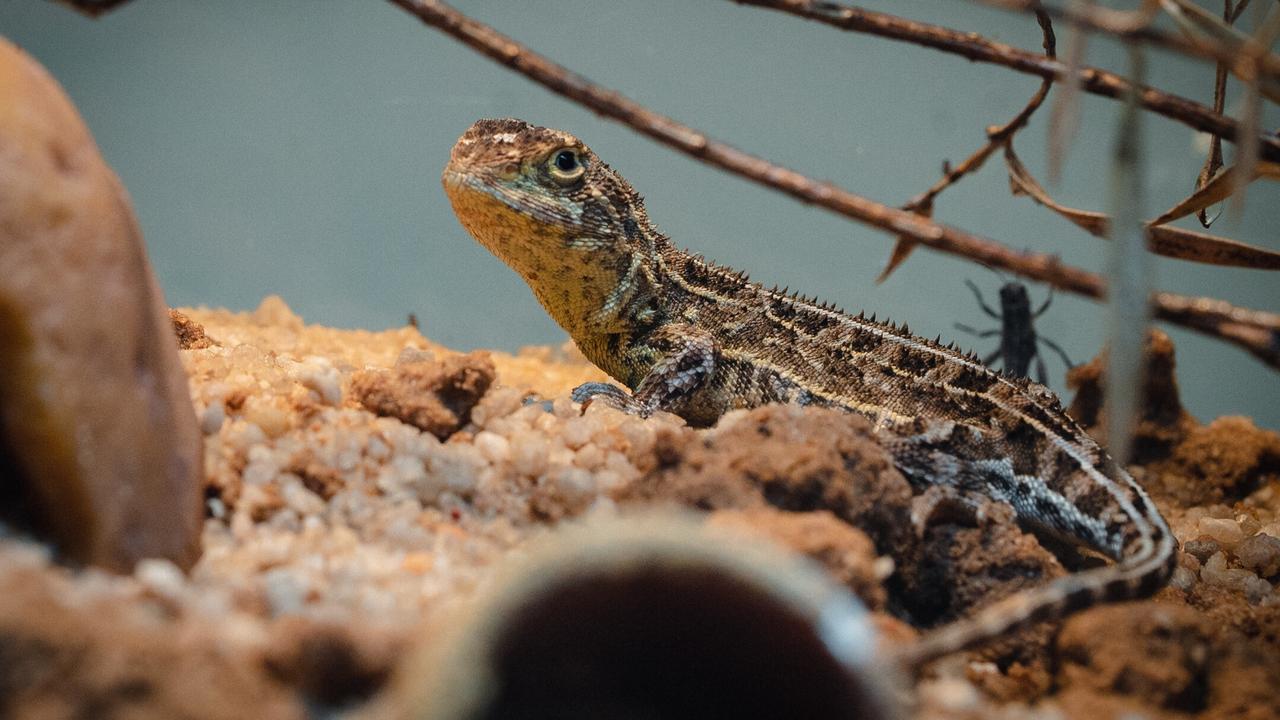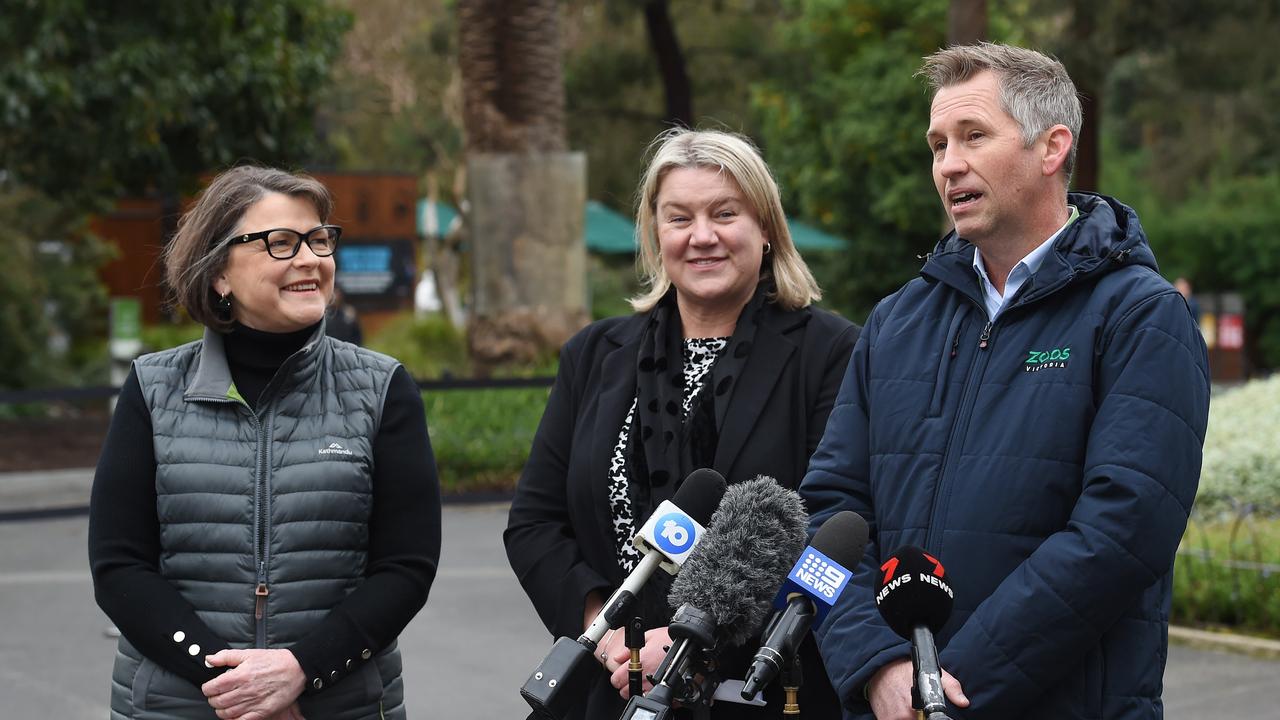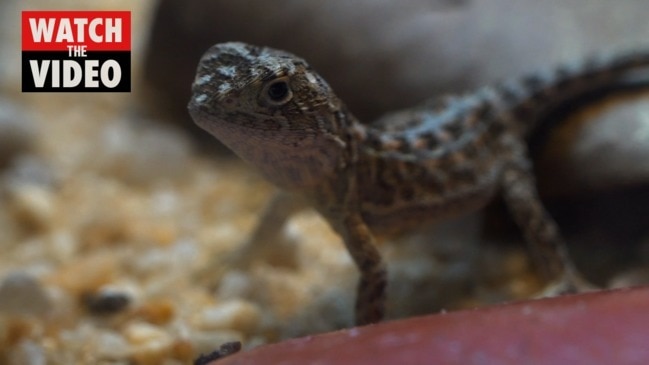Earless lizard thought to be extinct found alive in Victoria
Researchers have found group of lizards in the wild that they thought had become extinct, making it the first time they had been found in more than 50 years

READING LEVEL: GREEN
A tiny earless lizard described as “the most endangered reptile in the world” and once thought to be extinct has been found in Victoria.
The lizard, also called the Victorian grassland earless dragon, had not been seen in the wild for 54 years.
The energetic reptile is just 15cm long and could once be easily found in native grasslands west of Melbourne but land clearing meant the species lost much of its habitat and many of the lizards were hunted by predators.
Over time, scientists feared none were left.
But on Sunday, Victorian environment minister Ingrid Stitt announced a group of the earless dragons had been found in the wild in February.

Researchers found 16 lizards at the top-secret location and will now include the animals in a breeding program at Melbourne Zoo to grow the population.
“This is an amazing discovery and offers an opportunity for us to recover a species once thought lost to our state and the world,” Ms Stitt said.
Zoos Victoria chief executive officer Dr Jenny Gray said the tiny lizards were “probably the most endangered in the world” and described finding them as an “extraordinary” discovery.
She said Melbourne Zoo had spent a long time studying ways to breed critically endangered lizards and would now use this knowledge to guarantee the earless dragons survive.

“We will continue to fight the extinction of this critically endangered species – ensuring future generations can see and learn about this incredibly unique lizard,” Dr Gray said.
Zoos Victoria general manager of threatened species Garry Peterson said the rediscovery had come as a massive shock to experts.
“It’s probably the pinnacle of our conservation careers,” he said.

POLL
GLOSSARY
- extinct: when an entire species or type of animal dies and there are none left in the world
- critically endangered: when an entire species or type of animal is very likely to die out and become extinct
- habitat: the natural home of a plant or animal
- predator: an animal that hunts and eats another animal
- species: a group of animals or plants that can mate with one another
- breeding: when two animals of the same species have a baby or babies together
- population: a group of animals living together in the same place
- guarantee: a promise that something will be done
- generations: groups of people born around the same time as one another
- conservation: the act of protecting things found in nature such as different animal or plant species
- pinnacle: the highest point
EXTRA READING
AI is helping humans talk to animals
‘Dragon king’ rules Fantastic Beasts exhibition
Prehistoric Tassie species on brink of extinction
QUICK QUIZ
1. Why did scientists believe Victorian grasslands earless dragons were extinct?
2. How many of the lizards were discovered by researchers?
3. How long is the earless dragon?
4. What sort of habitat does it live in?
5. What will scientists do to ensure the species survives?
LISTEN TO THIS STORY
CLASSROOM ACTIVITIES
1. Endangered lizard
What are the effects on the environment when a lizard such as this small earless dragon, becomes endangered or extinct?
List the flow-on effects below:
Victorian Grassland Earless Dragon (endangered, feared extinct)
Flow-on effects to the environment
-
-
-
-
-
Time: allow 25 minutes to complete this activity
Curriculum Links: English; Science; Critical and Creative Thinking
2. Extension
Why do you think scientists are keeping the location of these newly-found earless dragons a top-secret?
How will Melbourne Zoo ensure this species grows in population before letting some go back in the wild?
Would you like to look after one of these earless dragons?
Time: allow 15 minutes to complete this activity
Curriculum Links: English; Science; Critical and Creative Thinking
VCOP ACTIVITY
Read this!
A headline on an article – or a title on your text – should capture the attention of the audience, telling them to read this now. So choosing the perfect words for a headline or title is very important.
Create three new headlines for the events that took place in this article. Remember, what you write and how you write it will set the pace for the whole text, so make sure it matches.
Read out your headlines to a partner and discuss what the article will be about based on the headline you created. Discuss the tone and mood you set in just your few, short words. Does it do the article justice? Will it capture the audience’s attention the way you hoped? Would you want to read more?
Consider how a headline or title is similar to using short, sharp sentences throughout your text. They can be just as important as complex ones. Go through the last text you wrote and highlight any short, sharp sentences that capture the audience.


